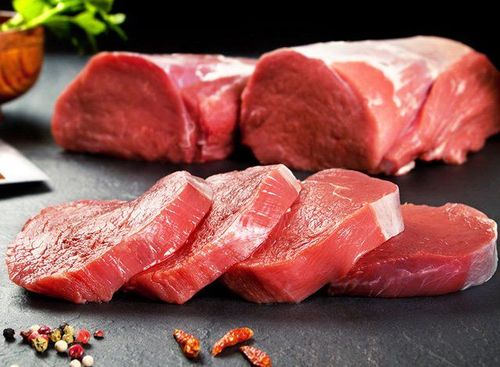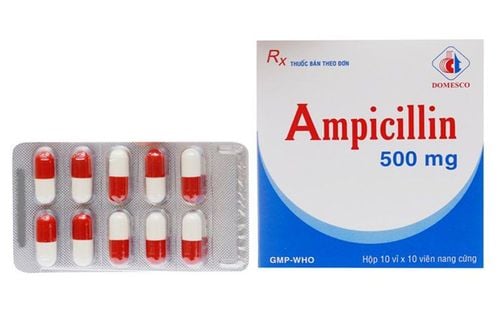This is an automatically translated article.
Anthrax is an acute infectious disease, with 3 main routes of infection: through the skin, through the digestive tract and through the respiratory tract. Respiratory anthrax is the most dangerous form with a mortality rate of up to 90%. Therefore, equipping the necessary knowledge to understand and prevent anthrax is extremely important.
1. What is anthrax?
Anthrax is an infectious disease, encountered in both humans and animals. Anthrax is caused by an infection with the bacterium Bacillus anthracis.
Bacillus anthracis is a gram-positive bacterium, belonging to the family Bacillaceae, genus Bacillus. Anthrax bacteria were first discovered in 1848.
Bacillus anthracis bacteria have not too high resistance, most of them are killed at 600C within 30 minutes, at 1000C within 5 minutes or substances common disinfection. However, it is worth mentioning here that when existing in the external environment, they exist in the form of spores. The spore form of Bacillus anthracis has very high resistance. They can exist in natural conditions for many years, even decades, and still maintain the ability to cause disease. Spores were destroyed only under dry heat of 1700C for 60 minutes or wet temperature of 1210C for 30 minutes.
Humans are infected with anthrax mainly through animals that carry the bacterium Bacillus anthracis. Anthracnose bacteria cause anthracnose disease to animals, especially common in herbivores such as buffaloes, cows, horses, sheep,... Cattle infected with anthracnose will mostly die. If people come into contact with or eat infected animals, they will be infected. Depending on the route of infection, the symptoms and nature of the disease will vary.

Bệnh than có thể lây nhiễm qua việc ăn thịt gia súc
2. Types of anthrax
There are 3 types of anthrax corresponding to 3 main routes of infection.
Skin anthrax Skin anthrax is the most common form (94-95%), and also the least dangerous. When we come into contact with sick animals and their waste, or directly butcher animals that have died from anthrax, anthrax spores can enter the human body through scratches or wounds. open wounds on the skin.
Gastrointestinal anthrax Approximately 0.5-0.7% of anthrax patients experience this form of the disease. If you eat raw or undercooked meat from animals infected with anthrax, the risk of gastrointestinal anthrax is very high.
Respiratory anthrax This is the rarest but most dangerous form of anthrax with a mortality rate of up to 90% if not treated promptly.
3. Why is anthrax dangerous?
Anthrax is considered particularly dangerous when the patient has an anthrax form that is transmitted through the respiratory tract. When a patient inhales a certain number of Bacillus anthracis spores, they penetrate deep into the respiratory tract and enter the lungs. After overcoming the body's natural resistance barrier, they continue to enter the lymphatic system, grow into bacteria and then spread toxicity throughout the body. When toxins build up in the lungs, it causes a host of serious problems. After the incubation period lasts from 1 to 5 days, the patient begins to appear dangerous symptoms such as high fever with chills, cyanosis, shortness of breath, profuse sweating, headache, ... quickly turned to sepsis, nephritis, meningitis, systemic toxicity and death of the patient. The mortality rate in this disease is very high, up to 90%. In the case of intensive treatment, only about 55% of patients recover.
Another point that makes anthrax so dangerous is that the spores of anthrax bacteria have a very high viability. As stated above, Bacillus anthracis spores can survive for a long time in natural conditions, even decades before entering the host, reactivating and multiplying. A small amount of anthrax bacteria with a fingernail can kill more than 10,000 people.

Bệnh than có thể gây ra các biến chứng nguy hiểm như viêm màng não
4. How to prevent anthrax
Anthrax vaccination should be carried out for animals to reduce the risk of disease outbreaks. Currently, there is an anthrax vaccine for humans, but this vaccine is in limited quantities and is usually administered only to military personnel serving in combat or those with specific occupations exposed to large amounts of animals. objects or products containing many bacteria. Animals that have died from anthrax should be properly destroyed. After deep burial, the carcasses should be covered with lime powder to disinfect and prevent the spread of bacteria. Do not trade or use the skins of animals infected with anthrax . Do not eat meat when you suspect the animal has died of anthrax. Ensure food safety, eat cooked and drink boiling. Keep the body clean, take care and pay attention to scratches or open wounds on the skin.
If you have unusual symptoms, you should be examined and consulted with a specialist.
Please dial HOTLINE for more information or register for an appointment HERE. Download MyVinmec app to make appointments faster and to manage your bookings easily.
Articles refer to the source: Cdc.gov
MORE:
More people with Whitmore's disease - precautions to avoid What is Gram-positive bacteria? What is a live attenuated vaccine?













